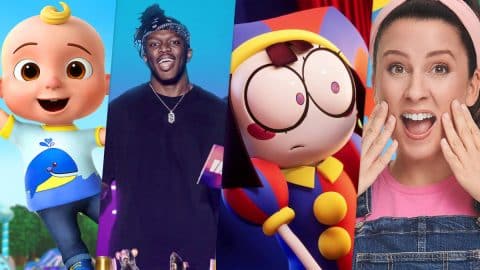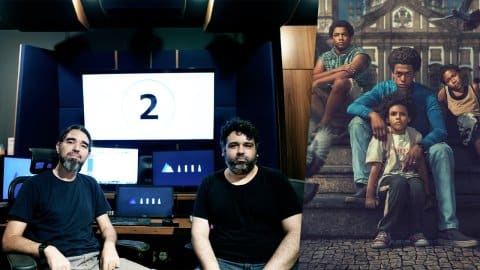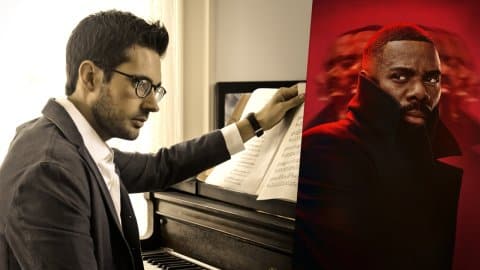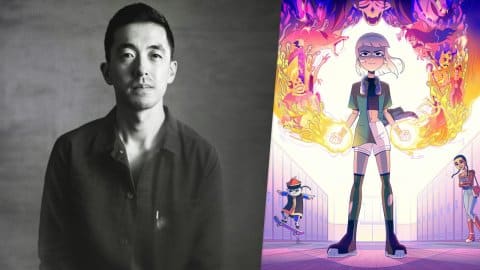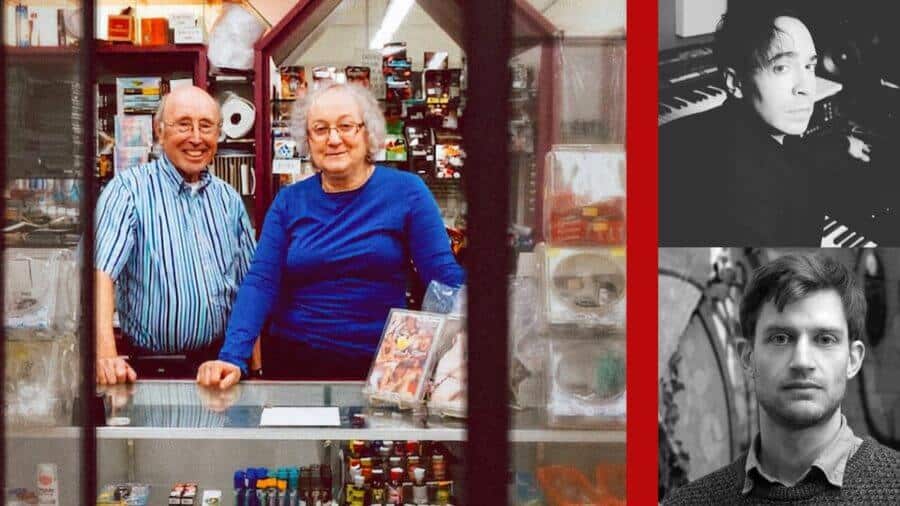
The Ryan Murphy produced documentary, Circus of Books premiered last month on Netflix and has been creating buzz ever since due to its unique subject matter. We scored an interview with the music team that worked on the project.
In case you aren’t familiar with the documentary, here is a little backstory: In 1976, Karen and Barry Mason had fallen on hard times and were looking for a way to support their young family when they answered an ad in the Los Angeles Times. Larry Flynt was seeking distributors for Hustler Magazine.
What was expected to be a brief sideline led to them becoming fully immersed in the LGBT community as they took over a local gay bookstore, Circus of Books. A decade later, they had become the biggest distributors of gay porn in the US. The film focuses on the double life they led, trying to maintain the balance of being parents at a time when LGBT culture was not yet accepted. Their many challenges included facing jail time for a federal obscenity prosecution and enabling their store to be a place of refuge at the height of the AIDS crisis. Circus of Books offers a rare glimpse into an untold chapter of queer history, and it is told through the lens of the owners’ own daughter, Rachel Mason, an artist, filmmaker and musician.
Adding to the delight of the documentary is the retro score by Ian M. Colletti. Additional music was also contributed by Rafaël Leloup. To learn more about the creative process of how a documentary like this is scored, we spoke to Colletti and Leloup. Below they talk about everything from how involved the director was, to what their collaboration looked like.

How would you describe the score for Circus of Books?
Hello, and thank you. It’s very much a hybrid. It’s music highly interwoven into the characters, the arc development, pacing, frame cuts, with heavily stylizations too to help create an environment for the documentary which references back and forth quickly between a past specific time era, and the present.
It’s a performed film score by myself, on real instruments which is one of the main things I do. I used acoustic, chamber, percussion, and performed live sequenced synthesizers from the mid 70’s to the late 80’s with some small exception. I try making film scores that are highly modern and forward in their approach, where they can be nuanced, subtle and more timbral sound based, but also in the same hand being a full believer in the evolutions of musical harmony, melody, theme, and counterpoint and the impact this tradition can still potentially have. I mix acoustic, chamber, and synthesis often in a deliberate way that is kind of an earlier application of it, when these “musical synthesis” machines were first coming into existence often within the new music and classical world.
For example, the violin of flute is a smooth sine wave naturally, I blend this with sine wave smooth analog synthesizers, and so on, like a bassoon being a square wave, I mix this with square wave synthesis, and so on, including soundscapes. The score needed was a very emotional, highly supportive piece of architecture with constant variation, nuance and subtlety that never overstepped its bounds, but remained very present.
You have been performing at Carnegie Hall and Lincoln Center since you were 12 years old. According to your IMDB page, Circus of Books is your first documentary to score. What made you want to work on this film?
Yes, I started out playing the violin in NY Orchestras as a kid, then moved on to guitar, composition, Jazz, Classical, Studio, but always focusing on performance, and as bandleader, singer, other as well as in the different music studios I have made and hunkered down in NYC. Rachel Mason and I have been good friends, and excited collaborators for a very long time, she’s the best. We used to play shows, work with the same artists, and perform often at my past music venue, studio, art gallery Vaudeville Park sponsored by New York Foundation for the Arts (2008-2013) in Williamsburg, Brooklyn. When it came time to needing to entrust a composer for delivering a serious and compelling music score from a composer for her second film, we were both very fortunate with its timing and that the niche was also such a good fit. I am truly grateful it worked out in this way, and the stars aligning in this way with Circus of Books. It was a relationship, awareness and respect, many years prior in the making, which really was beneficial in helping to get the needed hard work done. It also really came down to trust as well. Rachel knew me well, and that I would do the best music I could for her, respect and follow what she and the film needed, and see this very important work through with accountability. Her work, and these people’s important story along with her own, demanded the truest level of effort and commitment.
I was working full force towards my career as a film composer based in NYC to support myself, and there were no feature films going on available to me at that time as a composer locally. More of the work in film composing I have done in NYC is indicative of the city. Live film scores, archival reel film scores, small theater indie scores, live film scoring with orchestra, live shows, music for fashion, the occasional commercial opportunity or short film, art gallery screenings, music for video artists, dance, gallery, museum, even quite a bit of live foley even. It took me leaving my focus just in the NYC pool I know and love, and a needed plunge into the amazing west coast industry and energy of film creatives. I was so very fortunate to work with the wonderful, bright and the sharp talent that made this film, between Rachel, Kathryn Robson, the producers and cinematographer, the outstanding music supervisor Taylor Rowley, and the super talented and experienced Rafael Leloup who did an amazing job and really helped us get this score out the door.
Ian: How involved was writer/director Rachel Mason with the score? Did she have a very specific sound she was going for?
Yes, she was very involved.
We had many, many ideas at first, and the direction we ended up going in after many possibilities and sketches, was a beautiful and sweet balance that came from just really trying to get it perfect, and not hold on to anything. I grew a lot from the experience, and only hope to grow more and become better with every next score I do. We worked very well together, as we are very similarly driven people and as working artists in many ways. This was a tremendous effort and tour de force on her part with Circus of Books. A whole five-year film process from the most personal and bearing parts of her family and life, so the attitudes and attention of the music I made really needed to honor with the utmost respect to her as a filmmaker, the members of her family and their story, and her as a person bearing this for the world to see. We focused in on the queer 80’s counterculture club music stylistically, but equally, I mixed in with a lush, ornamental and tender human feeling through real acoustic, stringed instruments, and delicate harmony to share this quality of vulnerability and personal closeness.
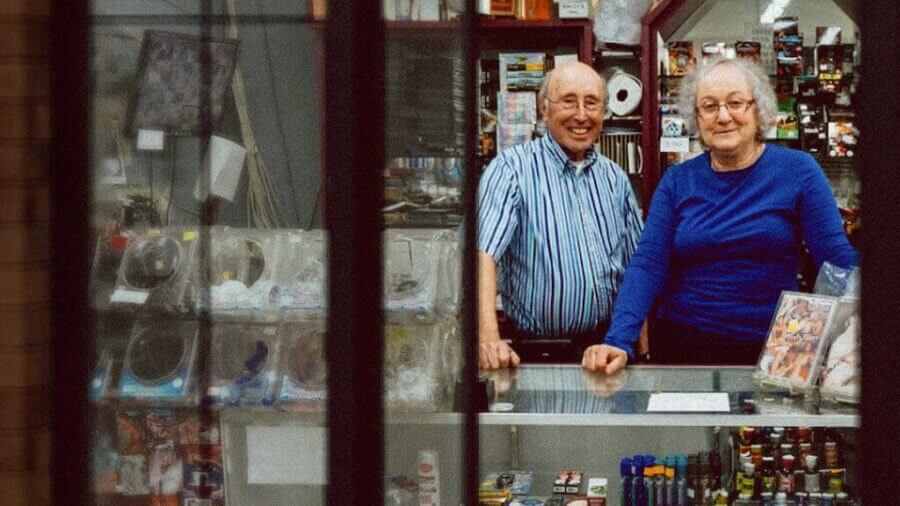
How would you say your approach was different for this documentary, than other composers who have scored similar stories like this?
I think that’s a very fair question, and that this film is a bande á part, the way I see it. There is, and never has been a story like this in it’s way, that is why it is special in my mind, and ideally it needed a score genuinely unique enough to compliment it. Rachel knew this, I knew this and that is how we made efforts to proceed. I would say, one of the things I took from the message of the story illustrated through the great film making, is yes it’s a crazy and spectacular story with very unique people, but it really could be about and for anyone going through the same struggles and deserving their rights to be left alone and live how they prefer and decide.
I can’t really, or wish to assume or speak for anyone else, or defy the logical grounds of objectivity and say that my score for this film is special, or comparatively to anyone else and their talents, work habits or approaches. I did feel like we really tried, and I tried not to be too clever to force anything that didn’t naturally fit
There is a video of you playing some of the film’s score on your site (see below). The track has a very 80s synth feel. Was this the vibe you were going after?
Thank you for listening. I was actually using a “FM” synthesizer by Elektron, a non-analog one in that clip, which was a type of popular sound in the 1980’s by the Yamaha DX7, as it was a more spectacular and out of this world possibilities of sound. It’s a soft but nostalgic vibe. I like to try new out applications and combinations for different music staples, and recognitional triggers. I try for a less postmodern approach on everything I do as much as I can.
I always wonder what were those attitudes of past pioneers we look up to from eras like the 80’s, or even the 1880’s, or 1780’s? I don’t bother making music, or least putting it out into the world if I’m not trying to add something new to the longer musical conversation of time. For me, that’s my relationship to music. Whether I end up doing that or not, I don’t know, it’s really not for me to say, but it’s what drives me.

How did you become involved with Circus of Books?
I joined the project much later, towards the end of the post-production. I had already worked in the past with one of the producers of the film, Camilla Hall and the Editor/Producer Kath Robson, both of whom are familiar with my work and workflow. I met Rachel through them and was very thrilled when they asked me to hop on some cues that required a more orchestral feel. As Ian specializes in analogue and hardware synth, it was a great complement to have a few orchestral touches.
You scored the intro and the outro to the film. Why were you given these specific sequences to score?
The intro and ending sequences used temp tracks that had percussion, orchestra, and accordion. I often work with percussion and orchestra given my classical background and experience in the film music industry, and accordion is my main instrument. Because Rachel was very keen to keep a very similar feel to the temp track in those specific moments, they decided to have me take on those two sequences.
Had you already heard Ian’s score before you started working on the film? How did you make sure your work on the project with consistent with Ian’s?
Of course. Before starting the collaboration I listened to Ian’s work, it was pretty awesome to hear such a clear voice coming out of the score. Ian working essentially out of the box, with hardware synths, gives his music a totally unique touch that only he can make. It was super exciting for me to try to build around that sound with my tools, consistently with his overall concept. On top of real instruments, I used the computer a lot in my work, I love filtering sounds through effects that can only be achieved digitally. It was a real pleasure to see how both the analog and digital worlds worked great together.
What did your collaboration with Ian look like?
Before I started to work on my tracks, Ian sent me plenty of individual synth layers and sounds that he created for this score and exported from his collection of synths. I had a blast playing around with that whole new set of Ian-specific sounds inside my system. We thought it would be the best way to keep his touch, while being able to add what Rachel was hoping to get on the scenes, for which I was brought in.
What was your favorite part about working on this film?
I had lots of favorite parts! Working again with Camilla and Kath was awesome, and discovering Ian’s work and Rachel’s film was too. Ian and I have two creative processes that are completely different and yet, extremely compatible. I would love to work with him again and spend more time experimenting together, and finding unique sounds together to use in new projects. On top of that, being able to have a small part in Rachel’s documentary was perfect, the story is so good, funny, and tackling so many important topics. She did an amazing job and I’m thrilled to have been a part of her film.

